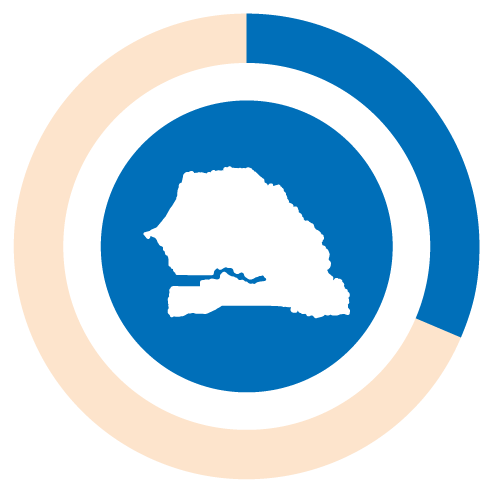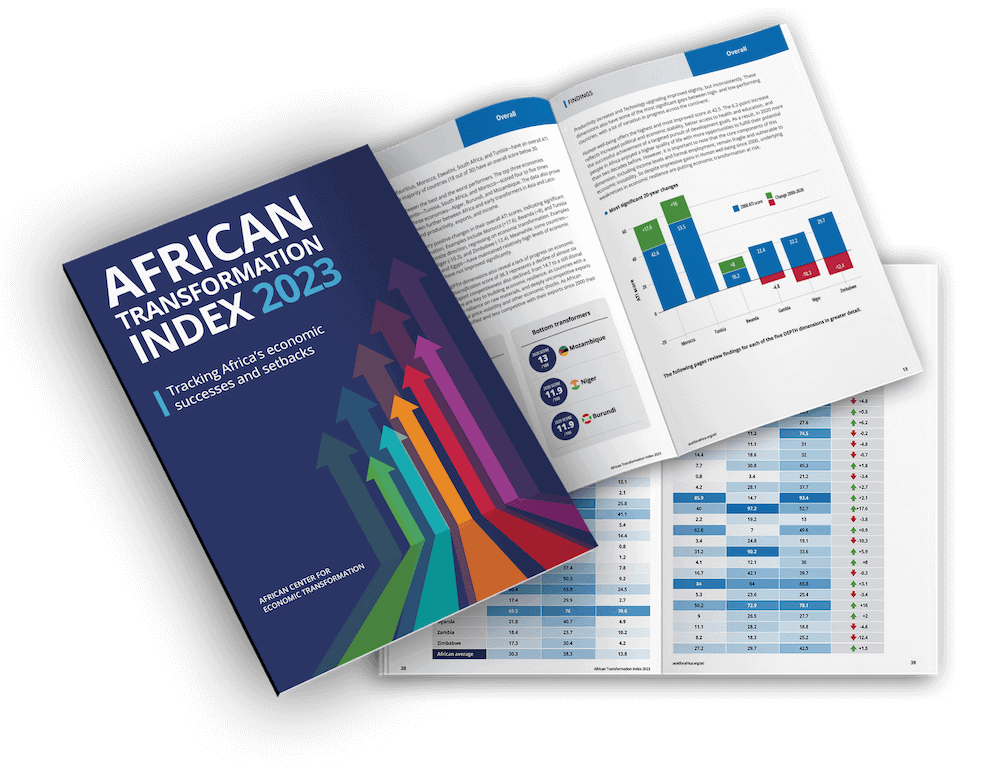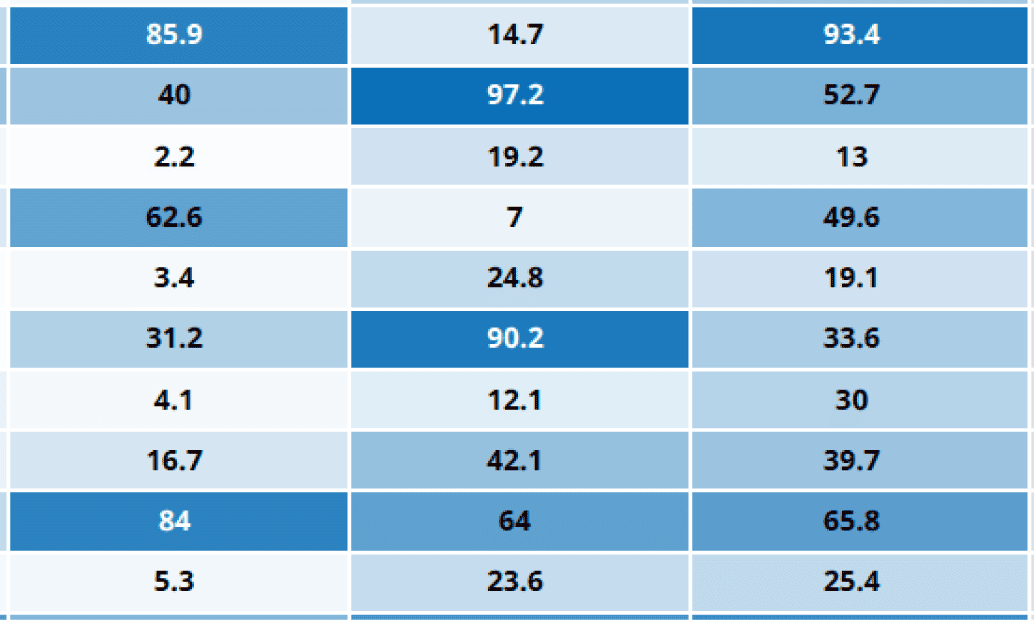ATI
COUNTRY PROFILE
Senegal
Senegal is a lower-middle-income country in West Africa. Between 2000 and 2013, Senegal’s GDP growth steadily slowed from an average rate of 5 percent to 2.5 percent, with substantial annual variations associated largely with the country’s vulnerability to extreme climate conditions and external shocks. Senegal is a middle economic transformer. Its 2020 overall ATI score was 31.6, slightly above the African average, but a slight decline compared to its score in 2000.

Dakar
17.3 million
2.6 %
4.2 %
US $1,599
Senegal’s Performance on the African Transformation Index
The overall African Transformation Index score measures the five dimensions of DEPTH.

Overall score
31.6 /100
Score change
since 2000
At a glance
- Senegal is a medium economic transformer with an overall ATI score of 31.6. It sits just above the overall African average of 30.3.
- While Senegal has performed well and above the African average in Diversification and Technology upgrading in the past decade, in recent years it has shown slight regression.
| Score /100 | Change since 2000 | ||
Diversification | 50.3 | -8.4 | |
Export competitiveness | 9.2 | +1.6 | |
Productivity increases | 16.7 | -0.6 | |
Technology upgrading | 42.1 | -6.8 | |
Human well-being | 39.7 | +12.9 |
Diversification of production and exports measures countries’ capability to produce and export a widening array of goods and services.

Score
50.3 /100
Score change
since 2000
At a glance
- Despite becoming significantly less diversified since 2000, Senegal still remains one of the most diversified economies in Africa.
- The size of the manufacturing sector has declined from 22.1 percent to 16.8 percent since 2000, while services have remained steady at around 60 percent.
- Senegal’s export basket is relatively diversified compared to other African countries. This was achieved through successive medium-term development plans that focused on unlocking the growth potential of specific sectors, such as agriculture and industry.
Export competitiveness is measured as the ratio of a country’s share in the world’s exports of non-extractive goods and services to its share in world non-extractive GDP.

Score
9.2 /100
Score change
since 2000
At a glance
- Senegal’s Export competitiveness is weak, though it scores better than most African countries.
- Senegal has seen little or no improvement in this dimension since 2000, a result of low levels of technological sophistication in its exported goods.
Productivity increases measure the value added per unit of labor in agriculture, manufacturing, and services.

Score
16.7 /100
Score change
since 2000
At a glance
- Senegal has slightly regressed in this dimension, dropping from a score of 17.3 in 2000 to 16.7 in 2020.
- While agricultural productivity has increased substantially and services productivity increased slightly, manufacturing productivity has fallen since 2012.
Technology upgrading measures the medium-and high-technology content in total production activities and total commodity exports.

Score
42.1 /100
Score change
since 2000
At a glance
- Despite a recent decline, Senegal continues to perform well in Technology upgrading, outperforming most of its peers.
- The country has seen ups and downs, with a mostly declining proportion of medium- and high-technology content in exports, and volatility in the adoption of technologically advanced production methods.
Human well-being measures economic and social outcomes and enablers in terms of incomes, income inequality, formal employment, and female participation in formal labor markets.

Score
39.7 /100
Score change
since 2000
At a glance
- Senegal improved its Human well-being score significantly between 2000 and 2020.
- Steady progress has been driven by improvements across all indicators, with rapid gains in recent years in per capita income.
- Income inequality has fallen slightly, while the labor force is steadily becoming more formalized.
- Unemployment remains a challenge, and the government has put organizations and initiatives in place to support business development and job creation.
Discover more from the ATI
ATI Scorecard
Explore the data behind the economic transformation progress of 30 African countries between 2000-2020.
Growth with DEPTH
Explore the ATI in DEPTH and see how African countries performed on each dimension between 2000-2020.
Downloads







